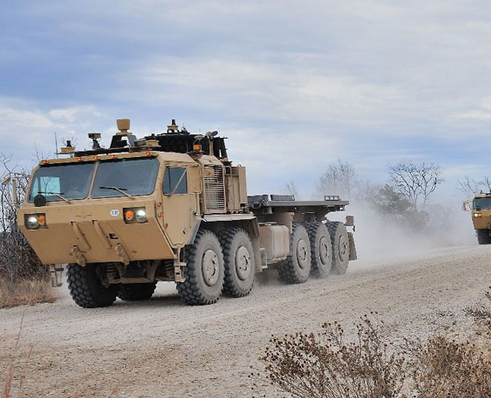 NEWS
NEWS
 NEWS
NEWS
 NEWS
NEWS
![]() Google might be the most famous innovator of automated cars, but it’s not the only one ‘driving’ the concept forward. With unmanned aerial vehicles already a highly formidable and controversial part of its repertoire, the US military is now turning its attention to more ‘peaceful’ applications of drone technology, in the form of driverless trucks.
Google might be the most famous innovator of automated cars, but it’s not the only one ‘driving’ the concept forward. With unmanned aerial vehicles already a highly formidable and controversial part of its repertoire, the US military is now turning its attention to more ‘peaceful’ applications of drone technology, in the form of driverless trucks.
The Autonomous Mobility Appliqué System (AMAS) program is the brainchild of defense industry contractor Lockheed Martin, which has just completed a series of advanced tests showing that fully autonomous convoys of trucks can operate in urban environments with a mish-mash of vehicle types. The tests saw the trucks navigate various hazards, including passing stalled vehicles, oncoming traffic, road intersections, pedestrians and more, in both rural and urban areas.
Lockheed’s AMAS program involves using standard Army vehicles that have been equipped with LIDAR sensors and a second GPS receiver, and programmed with a bunch of algorithms to help them navigate. According to Lockheed, this gear could actually be loaded onto any kind of military vehicle, though for testing purposes they used M915 tractor-trailer trucks and Palletized Loading System vehicles.
The vehicles can still be operated manually when needed, with the sensor function serving to alert its occupants to any nearby threats to their safety.
Society might still be a few years away from being able to go out and buy a driverless car, but make no mistake: the era of robo-cars will arrive. Google has made tremendous efforts to ensure its self-driving cars can operate in the real world, and its been followed by a whole host of car manufacturers – including Audi and Ford, among others – that are keen to get in on the act.
There are also legal roadblocks to overcome – at the moment the law in most countries basically states that every car must have a driver controlling it, but a handful of US states – California, Florida and Nevada – have passed legislation that makes it legal to test driverless vehicles on the open road. However, the army chose a safer route for its AMAS vehicles, testing them in the less-than-public environment of Fort Hood, Texas.
Convoys are more or less the norm for Army vehicles, but they could also make sense for civilian vehicles too. Recent research shows that by moving in convoys, it would be possible to fit more cars onto our roads, improve safety and save on fuel – and that’s something that can only be achieved by automating daily commutes.
While still a ways off, at least the AMAS technology is on the right track, said David Simon, AMAS program manager for Lockheed Martin Missiles and Fire Control, in a statement:
“The AMAS CAD (Capabilities Advancement Demonstration) hardware and software performed exactly as designed, and dealt successfully with all of the real-world obstacles that a real-world convoy would encounter.”
Check out the short video of the AMAS trucks in action:
The AMAS CAD was jointly funded by the Army Capabilities Integration Center (ARCIC ) and Lockheed Martin. While the AMAS JCTD is aimed at augmenting the safety and security of human drivers in a convoy mission, the CAD was aimed at completely removing the Soldier from the cab.
THANK YOU